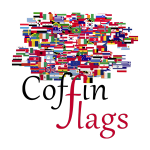Description
 Kazakhstan, officially the Republic of Kazakhstan, is the world’s largest landlocked country, and the ninth largest country in the world, with an area of 2,724,900 square kilometres (1,052,100 sq mi). Its capital is Nur-Sultan. It is a transcontinental country largely located in Asia; the most western parts are in Europe. Kazakhstan is the dominant nation in Central Asia economically, generating 60% of the region’s GDP, primarily through its oil and gas industry. It also has vast mineral resources.
Kazakhstan, officially the Republic of Kazakhstan, is the world’s largest landlocked country, and the ninth largest country in the world, with an area of 2,724,900 square kilometres (1,052,100 sq mi). Its capital is Nur-Sultan. It is a transcontinental country largely located in Asia; the most western parts are in Europe. Kazakhstan is the dominant nation in Central Asia economically, generating 60% of the region’s GDP, primarily through its oil and gas industry. It also has vast mineral resources.
The national flag of the Republic of Kazakhstan has a gold sun with 32 rays above a soaring golden steppe eagle, both centred on a sky blue background; the hoist side displays a national ornamental pattern “Koshkar-muiz” (the horns of the ram) in gold; the blue colour is of religious significance to the Turkic peoples of the country, and so symbolises cultural and ethnic unity; it also represents the endless sky as well as water; the sun, a source of life and energy, exemplifies wealth and plenitude; the sun’s rays are shaped like grain, which is the basis of abundance and prosperity; the eagle has appeared on the flags of Kazakh tribes for centuries and represents freedom, power, and the flight to the future.







